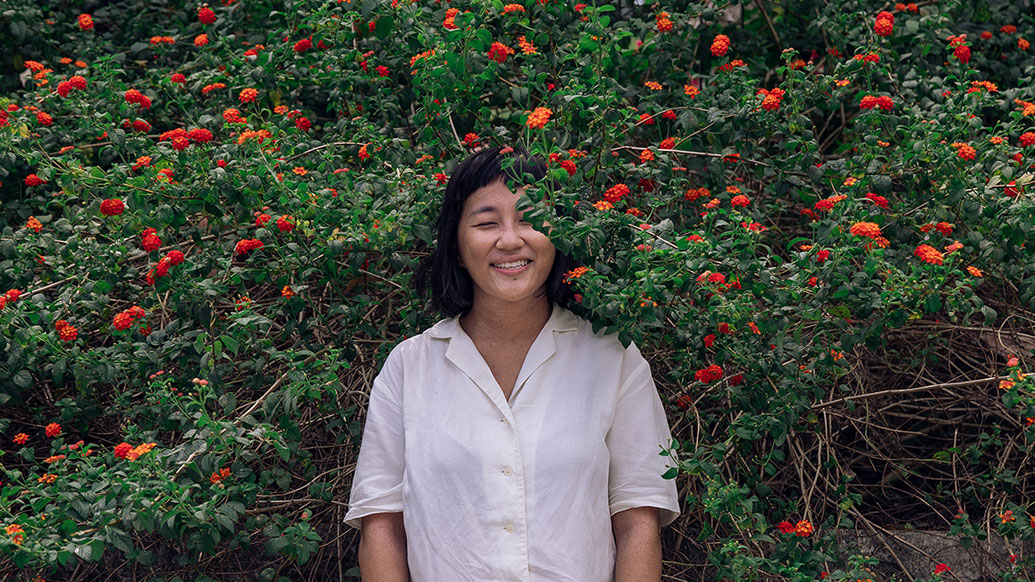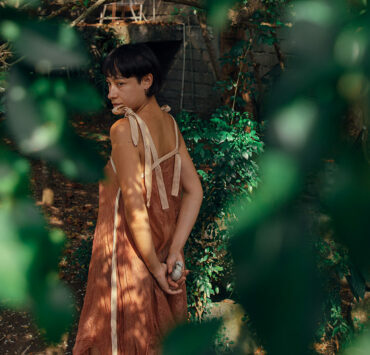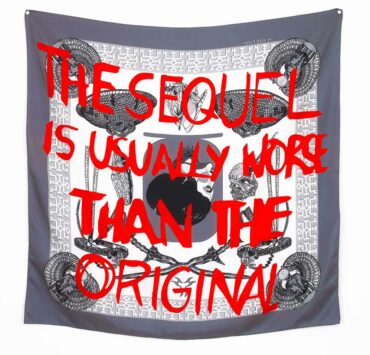



Asia Plaza Media Wall, Asia Culture Center, Gwangju, South Korea
An international student all her school days, Seno struggled with belonging. Being neither here nor there, she started asking fundamental questions about identity, place, and purpose. On her return to the Philippines, she started finding the pieces through film, art, and community. In 2018, she was selected as one of the Cultural Center of the Philippines’ Thirteen Artists awardees, a recognition given to groundbreaking visual artists. Three years later, Seno was tasked to curate the exhibit for the same prestigious award.
This interview was edited for clarity and brevity.
An international student all her school days, Seno struggled with belonging. Being neither here nor there, she started asking fundamental questions about identity, place, and purpose. On her return to the Philippines, she started finding the pieces through film, art, and community. In 2018, she was selected as one of the Cultural Center of the Philippines’ Thirteen Artists awardees, a recognition given to groundbreaking visual artists. Three years later, Seno was tasked to curate the exhibit for the same prestigious award.
This interview was edited for clarity and brevity.

When I was in Toronto, I realized that I didn’t know what I was doing. Why here? Why am I trying so hard to stay here? Then, I realized that I had to go back. I had this empty feeling growing up. [There was an] abyss, [an] emptiness inside.
I was alone in Canada for a good six years. I needed to be alone. I needed to go away. I needed to realize what was missing, what I wanted to figure out.
I wanted to become an architect [so] I took up Bachelor of Arts in architectural studies. In one summer session, I took up a film class. I really loved it but I was still trying to do this architecture degree. I ended up taking these two courses that changed my outlook. I also took a class named Japanese cinemas. It was basically looking at the parallel development of cinema and capitalism in Japan.
So, you were never exposed to Japanese cinema in Japan?
Yes. It was an amazing class because it was really looking at these films and the form of the films, not just what’s it about but how it’s made. That time was my awakening to politics and how I connected to the bigger picture. Growing up, I didn’t understand all these things happening in Japan. It really awakened me to have a stance on things.
So, I took another class called architecture media and communications. It was looking at architecture but from the point of view of different kinds of media. It was looking at architecture but through things other than buildings, other than the environment. Both of these classes had this effect on me so I decided to do a double major.

When I was in Toronto, I realized that I didn’t know what I was doing. Why here? Why am I trying so hard to stay here? Then, I realized that I had to go back. I had this empty feeling growing up. [There was an] abyss, [an] emptiness inside.
I was alone in Canada for a good six years. I needed to be alone. I needed to go away. I needed to realize what was missing, what I wanted to figure out.
I wanted to become an architect [so] I took up Bachelor of Arts in architectural studies. In one summer session, I took up a film class. I really loved it but I was still trying to do this architecture degree. I ended up taking these two courses that changed my outlook. I also took a class named Japanese cinemas. It was basically looking at the parallel development of cinema and capitalism in Japan.
So, you were never exposed to Japanese cinema in Japan?
Yes. It was an amazing class because it was really looking at these films and the form of the films, not just what’s it about but how it’s made. That time was my awakening to politics and how I connected to the bigger picture. Growing up, I didn’t understand all these things happening in Japan. It really awakened me to have a stance on things.
So, I took another class called architecture media and communications. It was looking at architecture but from the point of view of different kinds of media. It was looking at architecture but through things other than buildings, other than the environment. Both of these classes had this effect on me so I decided to do a double major.
I went to a Philippine Independent Filmmakers Cooperative meeting in Galleria. I made my own handwritten business card and I didn’t know anyone. I just showed up. I met Kidlat Tahimik, Raya, and John. I made friends with them. I also met Alexis Tioseco, a young film critic. He was so welcoming and such a breath of fresh air coming from Japan where there are certain ways of doing things when you meet someone. Through him, I watched a lot of experimental films. He connected me to Lav and ended up tagging along in a shoot of “Melancholia.”

Yeah. I mean aside from growing up in a very small, tight-knit community growing up, this was different. You don’t choose to grow up in your high school; you were just put there. It’s more of something like you find your own place in the world. I felt like I found a place where I felt comfortable and excited. I belonged in a way.
I don’t like to put broad words like the “Filipino identity.” I’m more interested in the details, really. Not putting any labels on things. I guess I make films as a way to process things that I don’t understand or some experience that I’d like to understand better. It’s kind of like therapy to understand all these things that make you who you are.
Doing that feels like a very heavy or complicated process to do by yourself. Do you have a support system that helps you build these films?
I definitely have a co-conspirator in John [Torres], my husband and partner from the beginning. He was someone I looked up to. Seeing his films before I started making [them], he always encouraged me to do my own. In the beginning, I would help him (aside from Lav). He was in the middle of something when I came around but he was always pushing me. I saw his process or way of working—writing some bits and pieces, then getting more support—and then that will enable him to continue to do that, to write, to shoot more, to keep at it.

I’ll burn out if I keep up with the pace of these things. I go by my own pace. I’m just getting by. Both of us are independent filmmakers and artists so we live off grants. We’re quite fortunate to find a way to stay afloat in the worlds of film and also art. Being on the fringes of both has been a good thing for us.
From being an artist, how did you become a curator? Was it a natural progression for you?
It hasn’t been so linear. In the beginning, I wanted to show works. I wasn’t thinking of making my own. My original impulse was to show the works of others. I go back and forth between curating and organizing.
What is your curation process like?
I tend to stick quite open throughout the process. I like the unpredictability. Coming in without having any preconceived ideas is really challenging but is also refreshing. It’s a good kind of adrenaline that you get when trying to figure out what fits… like a puzzle.
I was quite surprised because I just won from the last batch but I was very humbled to be asked. I felt kind of overwhelmed because at that time, [in June 2021], I had just given birth to our second child in April. I was still trying to recover from giving birth and just trying to get by as a parent of now two kids. So, I was like, “How was I going to do this? How am I going to put together this show during a pandemic?”
It was overwhelming but maybe it was worth it because at least I made new friends. They’re all artists that I admired and there are some artists that I was unfamiliar with that I wanted to see. I had been out of the loop since 2018 when I had my first kid. So I thought it was a way to catch up on what was going on, make new friends, and challenge myself to put on an exhibition.
I really enjoy working with space. I guess it brings together my unfulfilled ambition in architecture before.
I’m always uncomfortable with these kinds of questions “as a woman.” But it’s real—the struggle is real. But for me, I’ve been lucky to have the support of my partner. We always make works together. When I direct, he’s always produced my work.
You were also recently a mother. Did it also influence your art or has it influenced your art already?
I think so. It definitely influenced my sense of time. I have to be on my toes all the time. As a parent, you have to be ready for anything. It made me realize that I don’t have all the time in the world. I’ve always struggled with procrastination.
We’ve recently thought about how to balance family and to continue to make. We think the best way is to incorporate it to our work, this idea of family, to have them be part of it. It’s really the only way to keep making.
Being a parent really turned my life around. I feel like I have no time—except when they’re finally asleep—for myself. And that’s a struggle but to have that limitation is a good thing I think. To make me create things in this strange semi-asleep state you know, the wee hours of the morning. It’s that kind of twilight time. In between being awake and asleep but that’s very productive because I feel like the subliminal starts to mix with reality.

Her second feature, “Nervous Translation”, a film set in the post-People Power Revolution years through the eyes of an eight-year-old, will be on show at the Institute of Contemporary Arts in London this April.
There are still so many things to work out. We’re never finished being. We never totally figure out who we are. And if you figure that out, it’s boring. We’re always in a process of becoming. We’re never fully formed. So, I think that definitely drives my practice.
I’m still skimming the surface of myself, my memories, my relationships to others. I’m feeling my way through. I think the idea of scale is something that has found its way into my work—to bounce between the details and then serve the bigger picture. My making of works is just a way to understand what we’ve been through and what I am going through.
Anything else in the works this year?
I have a residency in Berlin this year. I’ll focus on writing or trying to write the script of “The Wild Duck.” There’s never really a total script. It’s really just a guide. We’re hopefully trying to keep that tension between the staged and unstaged. To keep that sense of being alive and not having everything planned. ●

Cover photography by Joseph Pascual
Creative direction by Nimu Muallam
Art direction by Levenspeil Sangalang





